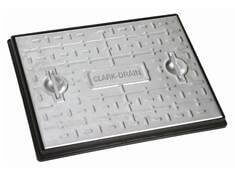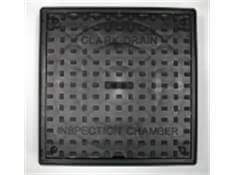Tips For Buying Replacement Manhole Covers
So, you’ve had a load of slabs delivered for your new patio project and the delivery vehicle has driven straight over your manhole cover in the driveway and broken it – what do you do next?
We receive dozens of calls and emails each week from anguished souls in similar circumstances. Sometimes they have taken the measurements of the old cover, sometimes they have the name – and whilst this information can give us clues, it isn’t enough for us to tell them exactly what they need. The problem stems from misapprehensions which are quite understandable – few people are born with an inherent knowledge of manhole covers!
Face the facts
As irritating as it may be, you will almost certainly need to replace not only the manhole cover, but also the frame in which it sits. Unless you are extremely lucky or your manhole was only installed very recently, you won’t find a cover that fits in your old frame. Even if you do, it will not be a perfect fit, which means the strength of the whole unit will be compromised, possibly dangerously so. The correct course of action is to remove the old cover and frame completely, purchase a new cover and frame with the correct size and loading capacity, and install it properly. So the first thing to do is to track down the correct replacement.
How to measure the size
The one constant that all manhole cover manufacturers stick to is the method of measuring their covers.
All manhole covers and frames, regardless of the make, are measured by the clear opening size when the cover is removed – the distance measured across from the inside walls of the frame, from one side to the other. Take this measurement from the existing frame and write it down. Unless your manhole cover is fitted above a plastic inspection chamber, (which we will look at later), this is the only measurement you will need.
What loading capacity will you need?
- If the manhole cover is in a garden or other pedestrian area, it only needs to be an A Class cover, rated to 2.5 tonnes. In a driveway we recommend B class, which is rated to 5 tonnes and will support a slow moving wheel load of 1.25 tonnes – perfect for the everyday car, but not quite suitable for HGVs or vans.
- If you do bring a van or small truck onto your drive we recommend a C class cover with a 10 Tonne load capacity. For commercial applications, we suggest you refer to the more detailed loading specification table on our website.
| STEEL MANHOLE COVER | PLASTIC MANHOLE COVER |
 |
 |
Steel, Iron or Plastic?
Provided you stick to the guidelines above, the choice is yours. Historically most covers were made of iron, but with the technology available today the choice is much wider. Galvanised steel covers are lightweight and easy to install but can be rated up to 17 tonnes, so are extremely versatile and very popular. Iron and plastic covers and frames are black, so they may look better in a tarmac driveway, but really once you track down the right size and weight loading the choice is yours!
Plastic Inspection Chambers
If your property is relatively modern, there is a fair chance your broken manhole cover may be sat on top of a plastic inspection chamber rather than a brick manhole. If this is the case you need to measure the diameter of the chamber, putting a tape measure across the inside – it will almost certainly be circular. Then all you need to do is purchase a cover and frame to suit that size of chamber (usually 450mm). It is worth double-checking before you buy that the cover and frame will fit all major manufacturers’ inspection chambers, unless you are sure of the make of your chamber.
If your plastic inspection chamber is deeper than 1.2m, for safety purposes you need to fit a reducer to reduce the opening to 350mm to comply with building regulations. One other thing to note here, and it may sound obvious – you still need to make sure your cover has the correct loading capacity when fitted to a plastic chamber!
Patios and Block Paving
Recessed manhole covers are now widely available, so there is no need to ruin a nice stone patio by installing a galvanised steel cover in the middle of it! Recessed covers and frames are simply metal trays that allow you to lay block paving, slabs or screed inside to match the surrounding areas. These too come in a variety of sizes and loads, so if you are block paving your driveway, replace your manhole cover at the same time, just make sure that your recessed cover has a suitable load capacity.
Installation
Installing a new manhole cover and frame is usually a relatively simple process provided you use the correct materials. It involves neatly removing the material (usually concrete or tarmac) around the old frame, levelling and bedding the new frame in, backfilling around it, and installing the cover. We have created a handy infographic guide to replacing manhole covers and there are plenty of good instructional videos available on the internet if you need assistance.







